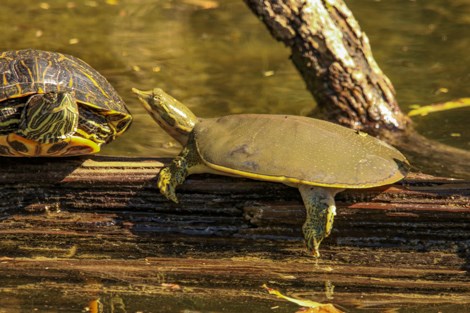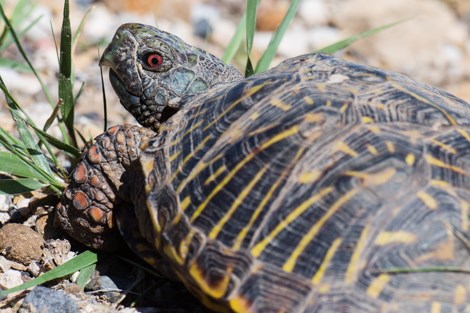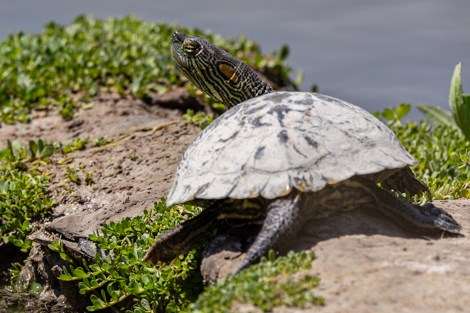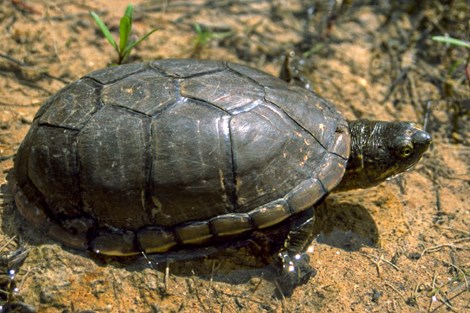
NPS/CA Hoyt 
NPS/R. Negele Texas Spiny SoftshellApalone spinifera emoryiLike most softshell turtles, the Texas spiny softshell lacks a hard shell and has a round, flattened leather carapace (upper shell). Notice the different between the "shells" of the two turtles in this picture. The Texas spiny softshell has a long neck and a snorkel-like elongated snout with large nostrils containing ridges. Their range spans Texas and New Mexico, strictly in the Rio Grande and Pecos Rivers, halting at the mountainous area of northern New Mexico. 
NPS/CA Hoyt Desert Box TurtleTerrapene ornata luteolaThe desert box turtle exists only in North America. Specimens discovered in the park were near Panther Junction and Persimmon Gap, but they are well established north of the park. Box turtles are mobile, terrestrial turtles, however, most of their lives are actually spent underground in burrows. This underground lifestyle allows them to escape temperature extremes, which provides thermal stability. During summer showers this species may emerge from the ground to find food. Social behavior is almost negligible, as they tend to interact only during reproductive efforts. 
NPS/CA Hoyt Big Bend SliderTrachemys gaigeaeWithin the park, these turtles are only found in the Rio Grande floodplain. They prefer ponds and rivers with muddy bottoms and aquatic vegetation. Primarily aquatic, the Big Bend slider is often seen basking on rocks or logs in the water, and when approached quickly dives to the bottom. The Big Bend slider has been found to interbreed with the red-eared slider, which are non-native to the park. This interbreeding poses a threat to the genetic integrity of the Big Bend slider. 
Yellow Mud TurtleKinosternon flavescensIn Big Bend, these turtles are found from the Rio Grande to Dagger Flats and the Rosillos Mountains area. In arid regions yellow mud turtles can be found in cattle tanks, ditches, and sewer drains. When their small pools and ditches start drying up, they can be found buried in the mud. They are seasonally diurnal (active during the day) and during winter months they bury themselves underground and hibernate. They have a lifespan of about 15 years. |
Last updated: June 24, 2020
